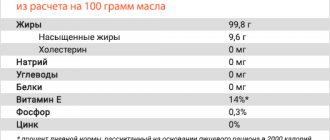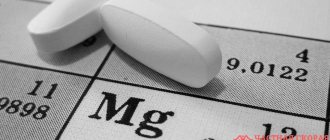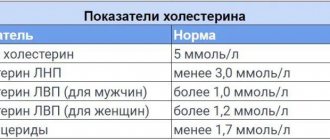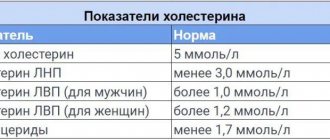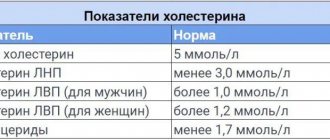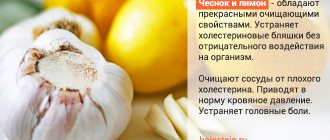Back to list Previous article Next article
21.06.2021
Tags:
useful, flax seeds
( 4 ratings, average: 5.00 out of 5)
Flaxseed is a plant food that contains healthy fats, antioxidants, and fiber. Some call it a "functional food." This means that a person can use it to improve their health.
People grew flax as a crop in ancient Egypt and China. In Asia, it has been used in Ayurvedic medicine for thousands of years.
Today, flaxseed is available in the form of seeds, oil, powder, tablets, capsules and flour. People use it as a dietary supplement to prevent constipation, diabetes, high cholesterol, heart disease, cancer and several other diseases.
Nutrients in flaxseed include:
- lignans,
- antioxidants,
- fiber,
- protein and polyunsaturated fatty acids such as alpha-linolenic acid (ALA), or omega-3.
Consuming these nutrients can help reduce your risk of developing various diseases.
However, there is currently insufficient evidence to support all of these hypotheses. Let's look at what research says about flaxseed and its possible benefits.
The benefits of flax for high cholesterol
Flax is an extremely useful plant, which today is used in many areas.
However, we are directly interested in the treatment of cardiovascular diseases, where flax is successfully used both in folk medicine and in modern high-tech medicines and vitamin complexes.
In folk medicine, not only flax seeds themselves are actively used, but also tinctures made from them, as well as flaxseed oil. You can not only prepare the latter yourself, but also buy a ready-made composition at the pharmacy.
There is also flour made from the seeds of the plant on sale, but it does not have any medicinal properties and is intended exclusively for weight loss.
First of all, the benefits of flax seeds for high cholesterol are:
- High content of polyunsaturated fatty acids Omega 3 and Omega 6 . These acids are extremely beneficial for the human body. Thus, Omega 3 alpha-linolenic acid, when ingested, promotes the elimination of cholesterol and supports normal metabolism of proteins and fats. This allows you to prevent many cardiovascular diseases, including atherosclerosis, normalize blood pressure, and strengthen the immune system. In combination with Omega 6, which is also found in flax seeds, the composition has an extremely positive effect on the blood vessels of the brain.
- High content of potassium, selenium, vitamin A, B, E. These are quite rare substances, therefore, with an incorrect and unbalanced diet, the body experiences a deficiency of them. All these components affect the composition of the blood, thin it, which speeds up metabolism, prevents the formation of blood clots and the development of vascular diseases.
Low-cholesterol diet as prevention of cardiovascular diseases
Cholesterol is a lipid (fat-like substance), the main part of which is produced in the liver, and the rest comes from the environment through food.
The functioning of the body without fat cholesterol is simply impossible. He is the one who helps:
• Strengthen cell membranes, making them elastic. • Produce various hormones, including sex hormones - estrogen and androgen. • Absorb vitamins A, D, E and K. • Produce bile. • Isolate nerve fibers.
Cholesterol is important for the normal functioning of the immune, nervous, and digestive systems, but if there is more of it in the blood than is required for normal life, cholesterol is gradually deposited on the inner walls of the arteries. This is how an atherosclerotic “plaque” is formed - a thick, dense formation that narrows the vessel and reduces its elasticity. This process of formation of such plaques is called “atherosclerosis.” After some time, a blood clot may form at the site of the atherosclerotic plaque, which completely clogs the vessel and cuts off the supply to vital organs. Blockage of the vessel supplying the heart leads to myocardial infarction; blockage of a vessel supplying the brain - to a stroke.
Cholesterol does not dissolve in the blood. Transporters called lipoproteins are used to transport it from cell to cell. High-density lipoprotein (HDL) cholesterol helps carry cholesterol from the arteries to the liver and then eliminate it from the body. HDL cholesterol is called “good” cholesterol: high levels protect against heart disease. The lower the HDL level, the higher the risk of cardiovascular disease. Low-density lipoprotein (LDL) cholesterol, on the other hand, transports cholesterol from the liver to body cells. It is the excess LDL cholesterol that can deposit in the arteries and form atherosclerotic “plaques.” The lower your LDL level, the better. There is another form of lipids whose levels need to be monitored: triglycerides.
The following average values can be considered as a normal lipid profile in adults:
• atherogenic coefficient - less than 3. • TG level - 0.3 - 1.7 mmol/l; • HDL level – not lower than 1.0 mmol/l; • LDL level - 1.2 - 5 mmol/l; • total cholesterol - 3.4 - 5.2 mmol/l. These lipid profile values reflect the norm for middle-aged men.
There are 2 types of high cholesterol:
• Primary or familial/genetic hypercholesterolemia (caused by gene damage and transmitted from father/mother); • Secondary (nutritional or due to concomitant diseases).
To make a diagnosis it is necessary:
• undergo examinations; • discuss lifestyle changes with your doctor; • decide on reduction tactics.
To reduce cholesterol levels, you need to:
1) Change your diet 2) add moderate physical activity, reduce body weight (BMI < 25 kg/m2), 3) eliminate bad habits (quit smoking, alcohol).
If you have chronic CVD (coronary heart disease, hypertension, have had heart attacks, strokes), then cholesterol-lowering drugs are prescribed immediately with lifestyle correction - a dose is selected, a group is selected, most often these are statins, and then after all recommendations are followed, cont.
Basic principles of the hypocholesterol diet (table No. 10)
Limiting fat intake
• Saturated: palm oil, mayonnaise sauces, visible fat on meat products, sausages, margarine - exclude; • Monounsaturated: oleic acid (olive, corn, peanut oils) pork, beef, lamb - limit; • Polyunsaturated (PUFA): linoleic acid contained in sunflower, corn oils, sea fish - increase in the diet;
Reducing the consumption of saturated fat and increasing PUFAs have been proven to reduce the risk of developing coronary atherosclerosis.
Limiting cholesterol intake from food
• Representatives: egg yolks, kidneys, liver, full-fat sour cream, cheese, milk; • No cholesterol in vegetables, fruits, grains; • Increasing the consumption of complex carbohydrates and reducing the amount of easily digestible carbohydrates (sugar);
Complex: dietary fiber (fiber, pectin). Pectin: black currants, apples, plums, carrots, cabbage, oranges. Fiber: oat bran, flakes and flour, peas, beans, vegetables. Easily digestible: honey, jam, condensed milk, confectionery and bread.
It has been shown that people whose diet consists of vegetables, grains and other complex carbohydrates tend to have lower rates of CVD. • Increasing the proportion of plant proteins (legumes and mushrooms) in the diet (at least 50%) in relation to animals.
The main goal of a diet for high cholesterol is to reduce the amount of animal fat. This, in turn, brings cholesterol levels within normal limits. Medical experts highlight the basic rules for the 10 dietary table:
• reduction of sugar-containing foods in the diet; • reducing the consumption of fat and fried foods; • use vegetable fats instead of animal fats; • predominance of fish products on the menu; • reducing the number of meat dishes (each serving should contain no more than 100 grams of meat); • removing fat and skin from meat before cooking; • inclusion of more vegetables and fruits in the diet, with the exception of potatoes and beans; • preparing porridges from all grains that cannot be processed; • maximum exclusion of alcohol and salt.
The list of prohibited foods in the diet includes:
• baked goods and sweets (chocolate, peanut butter, toffee candies, honey, marmalade, syrups, sugar and fructose, marshmallows, ginger and sugared peanuts); • fish, fatty meats in their pure form and broths prepared from them; • caviar, canned food and smoked meats; • pasta, semolina porridge; • cocoa and coffee.
When purchasing products, you should pay attention to hidden fats contained in pork fillets, beef, carbs, ribs and pieces of carcass with a visible amount of fat. Processed meat in the form of ham, sausage, and frankfurters contains a lot of cholesterol. Don't overuse eggs.
Table No. 10 suggests consuming no more than 2 pieces per week. Cholesterol is found not only in sugar, but in all sugar-containing foods. A hypocholesterol diet for men and women, aimed at reducing their amount, excludes cheeses, fatty sour cream and yoghurts, and butter, since they usually have a lot of sugar added. If there is a high level of cholesterol in the blood, it is necessary to completely exclude from the diet processed foods, industrially produced baked goods and fast foods, which contain trans fats and a large amount of saturated fat.
Table of foods containing cholesterol
| High cholesterol content | Lower Cholesterol Alternative |
| Fatty pork | Turkey, white meat chicken |
| Liver, lung and brains | Fish (mostly sea) |
| Squid, shrimp | Mussels |
| Egg yolk | Egg white |
| Caviar black and red | Fruits and vegetables |
| High fat sour cream, cheese | Low fat yogurt |
| Pastries, cakes, biscuits | Oatmeal cookies |
| Butter, lard | Vegetable oil |
Allowed products: According to nutritionists, cereals have beneficial substances. To season porridge, you should not use butter or cook it with milk with a high percentage of fat content.
Cholesterol is absent from vegetable fats. You can eat berries, vegetables and fruits. A diet for high cholesterol allows the use of self-prepared fruit juices and compotes without added sugar.
Table of products table No. 10
| Cereals and baked goods | Oatmeal and cookies, products using wholemeal flour, pasta only made from durum wheat, low-fat puddings, unpolished rice |
| Dairy | Skim or low-fat milk, kefir, cottage cheese, yoghurts, light low-fat cheeses |
| Fish and seafood | Sea fish dishes |
| Fats | Olive oil, soybean oil, sunflower oil, corn oil |
| Vegetables and fruits | Frozen, fresh vegetables and fruits, almonds and walnuts are allowed in small quantities |
| Meat | Turkey, veal, rabbit and chicken without skin |
| Soups and broths | Vegetable or soups with 2 meat broth |
| Spices | Natural seasonings and herbs, mustard, vinegar |
| Sweets | Popsicles, jellies, products without added sugar |
Foods to lower cholesterol:
A cholesterol-lowering diet allows you to include in your usual diet foods that help lower cholesterol. For example, these include:
• Broccoli, avocado. Broccoli is rich in dietary fiber, which reduces cholesterol levels in the blood. All food containing coarse fiber is not absorbed by the intestinal walls, envelops processed food and removes it from the body. Thus, accelerating intestinal motility makes it possible to reduce the amount of cholesterol ingested in foods by approximately 15%. You should consume at least 400 grams of broccoli every day. • Oyster mushrooms. Oyster mushrooms contain a statin, so they are analogues of medications. They reduce cholesterol synthesis in the body and stop the formation of new plaques in blood vessels. The daily requirement for oyster mushrooms is at least 9 grams. • Herring. Herring contains a large amount of Omega-3 fatty acids, which, when the ratio of protein carriers changes, reduces the cholesterol value. It is enough to consume at least 100 grams of herring per day to restore lumen in blood vessels and remove fat and cholesterol from plaques.
Example of a daily menu: A diet for high cholesterol and sugar allows you to combine various products, so creating a tasty and healthy menu is quite simple.
Example of ready meals for the day:
• breakfast: buckwheat porridge seasoned with olive oil, tea without sugar; • snack: apple; • lunch: chicken soup with 2 broths, baked fish with vegetables, pomegranate juice; • afternoon snack: low-fat cottage cheese; • dinner: boiled potatoes, herring, tea without sugar.
Compliance with the diet according to the diet increases the body's endurance, improves
feeling and general state of human health.
Contraindications
Undoubtedly, such strong “cleansing” properties are extremely beneficial for the body. However, there is another side to their impact, associated with a possible disruption of the absorption of some important components. Therefore, flax seeds are prohibited for use by young children, pregnant and lactating women.
Also, taking flaxseeds and oil is contraindicated for:
pancreatitis;- stomach ulcer;
- cholecystitis;
- kidney and bladder stones;
- serious liver dysfunction;
- poor blood clotting.
Also, flaxseed oil is not recommended to be taken together with laxatives, drugs that lower blood pressure and blood clotting, or vitamin complexes. If any side effects occur, such as nausea, dizziness, nasal congestion, you should stop taking it immediately.
The situation is completely different with a decoction of flax seeds, which has virtually no contraindications and is prohibited for use only by pregnant women, as well as people with urolithiasis and kidney diseases. Unlike the same oil, the decoction is quite easy to drink and does not cause disgust.
Can flaxseed oil be used in cooking or in salads?
Flaxseed oil can be used in cooking as long as it is not heated. It is best to add it to already prepared dishes and not heat it in the microwave. This is because heating the oil causes it to break down into a potentially harmful form. Flaxseed oil can be used to make salad dressings, but it can quickly go bad. Store it in the refrigerator in a dark-colored bottle and do not use it after the expiration date.
Back to list Previous article Next article
Decoction, flaxseed oil or flax seed - which is better?
In addition to being consumed in its pure form, flax oil is also useful to add to food, replacing other oils.
Ground flax seeds are great for lowering cholesterol levels, and their decoctions or infusions are also quite effective.
Flaxseed oil is considered even more effective; moreover, in pharmacies it is sold in the form of capsules (similar to fish oil), which you can simply swallow without feeling the unpleasant taste of the oil. But at the same time, it has a stronger effect on the digestive and ureteral system, as a result of which it has a lot of contraindications.
In general, doctors recommend taking flaxseed oil, since the effect from it comes faster. However, in the presence of the diseases described above, in which its use is strictly prohibited, doctors recommend considering options such as ordinary ground seeds or their decoction.
Diet Tips
Flaxseed can be consumed ground, in oil form, or in capsules.
It is also found in ready-to-eat foods such as muffins and other baked goods, pasta, snack bars and alternative milks.
Ground flaxseed can be added to:
- breakfast cereals,
- smoothie,
- soups and stews,
- salads and sandwiches,
- yoghurts.
You can also add a spoonful of flaxseed to the muffin mixture or use it to coat chicken instead of breadcrumbs.
However, too much flaxseed can give the food a bitter taste, which some people may not like. One solution is to start with a small amount and gradually add to taste.
Choosing oil on the shelves of stores and pharmacies
Pharmacy flaxseed oil.
Although flaxseed oil is sold in small shops and supermarkets, a higher quality product will be sold in a pharmacy.
The highest quality oils are sold in dark glass or plastic bottles, which protect them from strong exposure to sunlight and light.
The shelf life of natural high-quality oil is no more than 6 months, and after opening the bottle, it is stored for no more than 7-8 weeks. Also, it is important to pay attention to the composition; it should not contain any impurities, only pure flax seed oil.
Most often it is sold in volumes of 200 or 500 ml. For 1 course of treatment you will need approximately 250-300 ml. But you should also not forget about the release form in the form of capsules, which are much easier to use.
Risks
The nutrients contained in flaxseed may not be beneficial for everyone. People should avoid flaxseed products or consult a doctor first if they:
- use blood thinners such as warfarin (Coumadin) or aspirin;
- use non-steroidal anti-inflammatory drugs;
- take cholesterol-lowering medications;
- have hormone-sensitive breast or uterine cancer;
- are pregnant or breastfeeding;
- suffer from an allergy to flaxseed.
In general, people who eat flaxseed should avoid raw and unripe flaxseeds, as they may contain toxic compounds. Consume flaxseed ground and with plenty of liquid to prevent digestive problems.
Buy only small bottles of flaxseed oil in dark bottles and store them in the refrigerator, as the oil can spoil quickly. Also, do not use oil after the expiration date stated on the label.
Avoid heating flaxseed oil when cooking. Add oil to already prepared dishes and do not heat it in the microwave.
How to take this folk remedy for cholesterol?
For the most effective treatment, flaxseed oil should be taken 1 teaspoon 30-40 minutes before meals. This way it is absorbed into the blood faster and more efficiently. The best option is to take a spoonful in the morning, before lunch and before dinner, that is, 3 times a day with approximately equal intervals between doses.
It is quite difficult for many people to take such a fatty product on an empty stomach, so you can start treatment (the first 3-4 days) with 2 doses a day or eat what you drink with a small slice of apple, pear or orange. It is prohibited to drink oil with water.
Flaxseed oil in capsule form.
When using oil or capsules, the course of treatment is divided into 2 stages. The first lasts three weeks, after which you need to take a two-week break and move on to the second stage, which still lasts three weeks. You can repeat the course no earlier than after half a year.
Such restrictions are primarily associated with strong effects on the intestines, liver and kidneys. However, provided that the treatment technique described above is used, taking flax oil is absolutely safe.
The color of the oil can have several shades: from lighter yellow tones to darker ones. It all depends on the color of the grains and has absolutely no effect on the pharmacological properties. Another thing is the taste of the oil. The appearance of bitterness indicates the unsuitability of the product due to the expiration of the shelf life.
As for the decoction of flax seeds, which is also an effective remedy for cholesterol, it must be consumed for three weeks, constantly increasing the dose. The first days of taking 1-2 tablespoons 3 times a day is enough, but over time the dosage must be increased to 1/2 cup. The intake is also carried out 30-40 minutes before meals.
Preparing the decoction is quite simple. To do this, just pour 3-4 tablespoons of flax grains into 0.5 liters of boiling water, then cover with a lid, wrap well and leave until completely cool. The cooled mixture must be filtered.
Another method of consumption that is more suitable for women is to take pure ground seeds.
In this form, they contain a huge amount of phytohormones, that is, substances similar to the female sex hormone - estrogen. It is enough to chew 2-3 teaspoons of beans ground in a coffee grinder, washed down with water. This is done 3 times a day, before meals for 3 weeks.
To grind flax seed without a coffee grinder, you can use a food processor, blender, spice and pepper grinder, or a regular rolling pin.
Nutritional value of flaxseed
According to the USDA, a 7-gram tablespoon of ground flaxseed contains:
- energy: 37.4 calories
- protein: 1.28 g
- fat: 2.95 g
- carbohydrates: 2.02 g
- fiber: 1.91 g
- calcium: 17.8 mg
- magnesium: 27.4 mg
- phosphorus: 44.9 mg
- potassium: 56.9 mg
- folate: 6.09 micrograms (mcg)
- lutein and zeaxanthin: 45.6 mcg
A teaspoon of flaxseed also contains traces of various vitamins and minerals, but not in significant quantities. It also contains lignans, tryptophan, lysine, tyrosine and valine, as well as healthy fats, mostly unsaturated.
People should try to avoid whole flaxseed and consume it in ground form, as the intestines may not be able to absorb the nutrients contained in whole flaxseed.
The best recipes for the most pleasant reception
A much simpler and more enjoyable way to take it is to add flax seeds and oil to some dishes and drinks.
Adding to fermented milk products . A teaspoon of crushed seeds should be added to a glass of kefir or yogurt. This cocktail can be used as a breakfast replacement or taken once a day instead of pure oil.- Adding to jelly . For this you need a thin jelly made from any berries. Add 1 teaspoon of seeds to a glass of jelly, mix well and wait until it swells. You need to take a glass of jelly 2-3 times a day for 3 weeks.
However, it is worth understanding that consuming flax seeds with additional impurities is less effective, since the product is less absorbed into the blood. Also, do not forget about the daily intake of seeds, which should be no more than 30 g per 70-80 kg of weight.
Therapy results
The first quite significant results of therapy can be observed after a month. Based on medical practice and patient reviews, just by limiting factors that increase cholesterol levels, as well as consuming flax seeds, it is possible to reduce cholesterol by 1.5-2 mmol/l.
An even more effective scheme is to completely restructure the diet, from which you need to exclude fatty meats, fried and sweet foods. In return, it is necessary to focus on sea fish, fruits and vegetables.
It is also advisable to engage in at least the slightest physical activity and lead a more active lifestyle.
Based on experience, thanks to such a simple complex, in a month you can achieve a decrease in cholesterol levels by 2.5 mmol/l or more.
